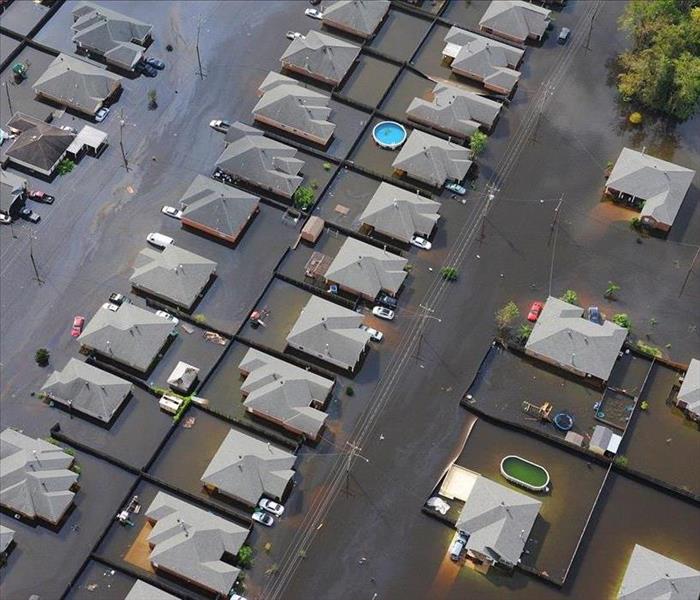Urban Flooding
11/25/2019 (Permalink)
Urban Flooding
Urban flooding has become increasingly more prevalent as cities continue to sprout in areas around the world. With virtually no soil into which water can be absorbed, cities flood easily. This absence of soil requires excess water to be eliminated through a limited number of sewage and draining systems that are interspersed throughout cities.
Urban flooding, in particular, can flood city streets, blocking roadways in its path, and have other negative effects on day-to-day life. When water builds up in drainage systems, drain covers can lift off of the ground in an occurrence called “dancing drain covers”. In addition to dancing, the covers can shift or travel a distance from the drain itself, leaving massive holes in streets that could prove to be dangerous for cars or pedestrians traveling on the road.
Though the reputation of urban flooding isn’t quite as serious as that of the flooding caused by hurricanes, the damage may be comparable if the storm produces a large amount of rain. It is therefore important to recognize how likely flooding may be in your city based on its geography. The risk of urban flooding is increased in cities that are located by rivers due to their tendency to overflow or those situated by major bodies of water due to high tide and the potential for storm surge. If you live in a city that is of greater risk, it may be helpful to prepare an emergency flood kit, containing necessities such as snacks, water, flashlights, and batteries in case your city suffers from a severe flood.
Damage Caused by Lightning
Lightning can cause both physical and electrical damage to homes and businesses if the building is directly hit by lightning during a thunderstorm. Lightning can burn through roofs, rip shingles or gutters from the building, and even tear into attics. In terms of electrical damage, lightning can increase the risk of an electrical fire igniting. Electronic appliances inside of your home, such as computers and refrigerators, can be harmed or destroyed if left plugged into an outlet during a thunderstorm.
Damage Caused by Flash Flooding
When a flood strikes your home or business, especially one like that which dumped excessive amounts of rain on Frederick, Maryland, and Washington, D.C this past weekend, water levels can rise quickly and inflict a significant amount of damage. The floodwater can carry mud and sediment, therefore contaminating the water and whatever it touches in your home or business. From this water damage, mold can grow and spread if the affected area is not remediated quickly. Flood water commonly affects drywall, flooring, and electrical systems such as cooling and heating systems, so it will be crucial to assess these areas for damage after a flood. On a larger scale, flood water can move houses or buildings off of their foundation, so be sure to watch for signs of that as well.
What to Do After the Storm
Immediately following the storm, survey your home or building for any visible indicators of lightning or water damage. This includes making sure that electrical breakers, outlets, and light switches are still functioning, checking plumbing systems for any leakage, and looking for any visible signs of water damage to items within the house or building. While cleaning up any damage, be sure to turn off all water and electrical systems so that when the electricity is restored, the water and electricity do not react with one another, which would result in further damage.





 24/7 Emergency Service
24/7 Emergency Service
